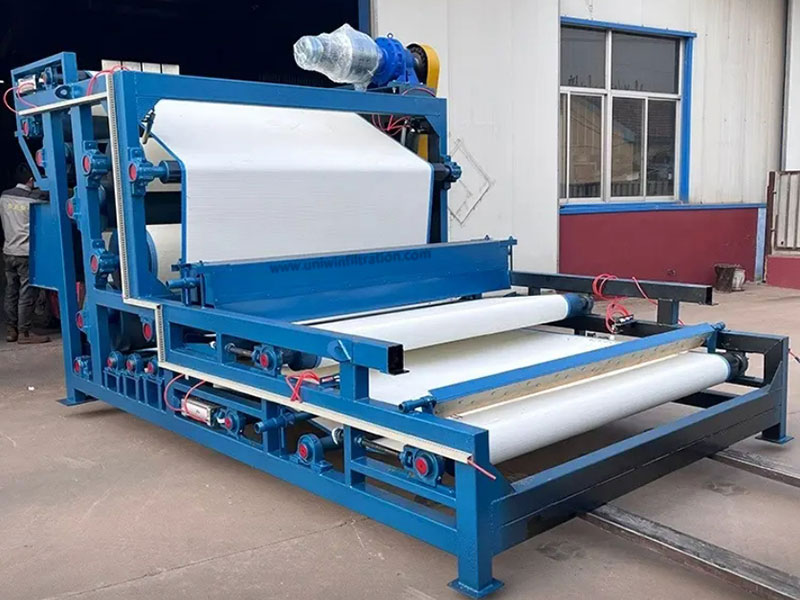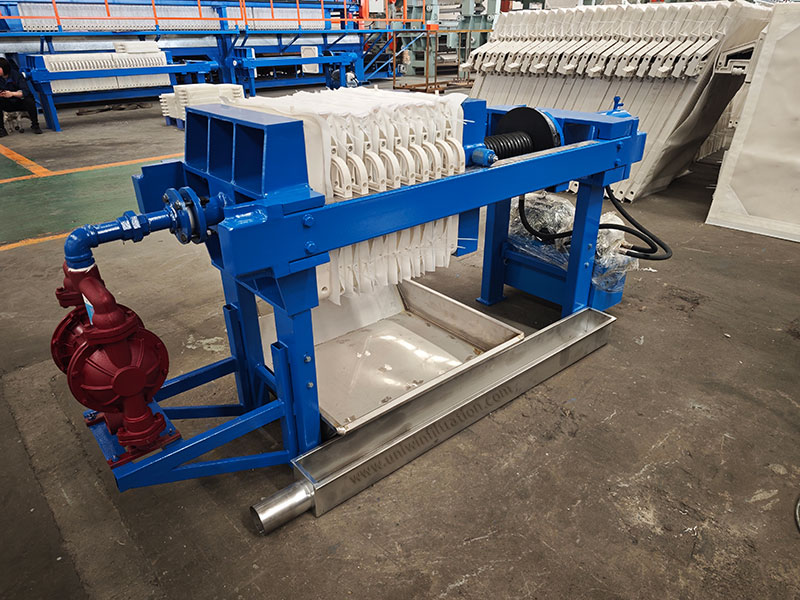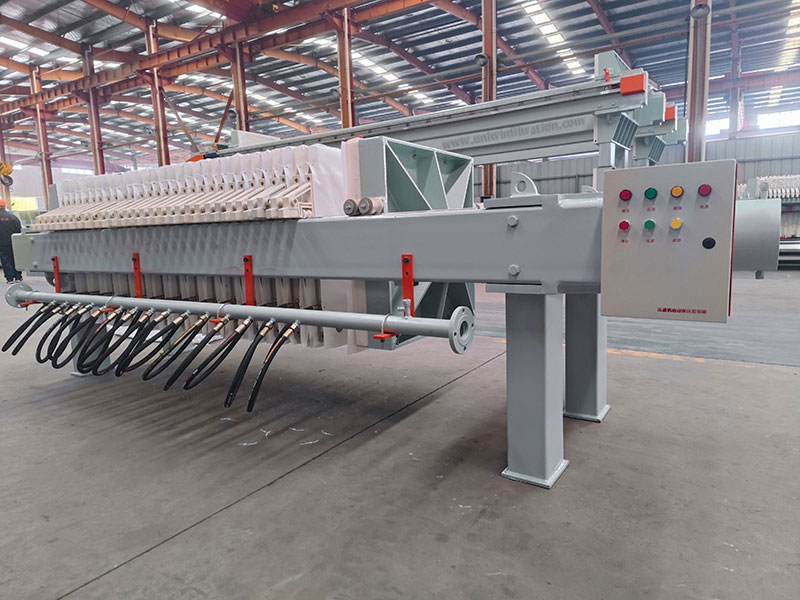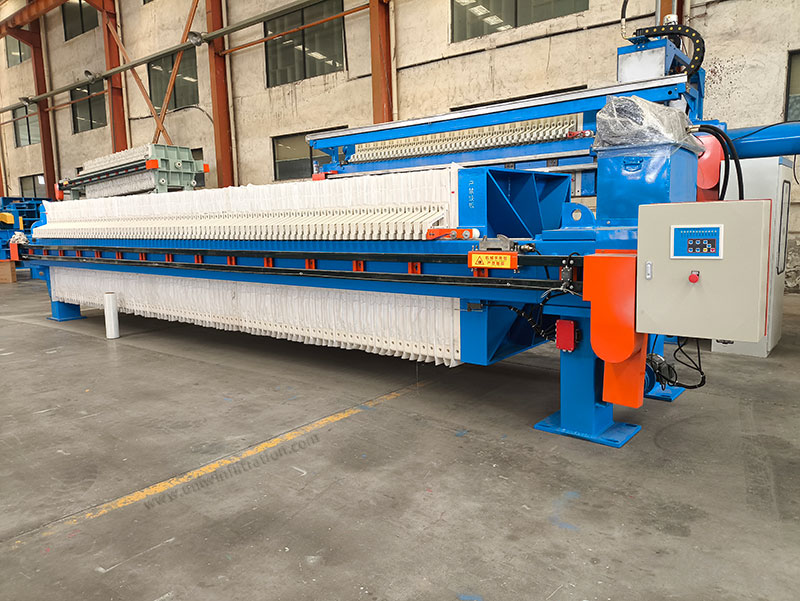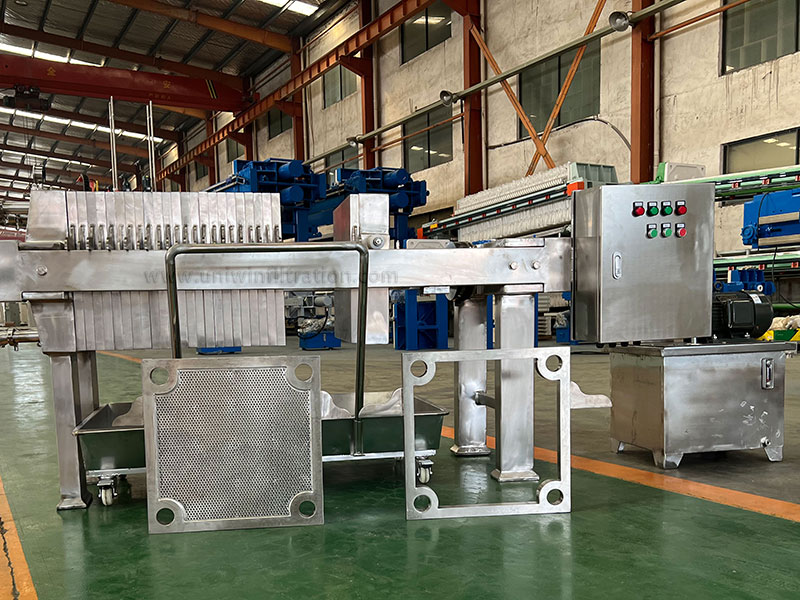Belt Filter
The belt filter is a continuously running solid-liquid separation equipment, which is widely used in sludge dehydration, chemical industry, mining, food processing, papermaking, and other industries. It mainly removes the water from the sludge through two stages: gravity dehydration and mechanical extrusion, thus forming a filter cake with low water content.
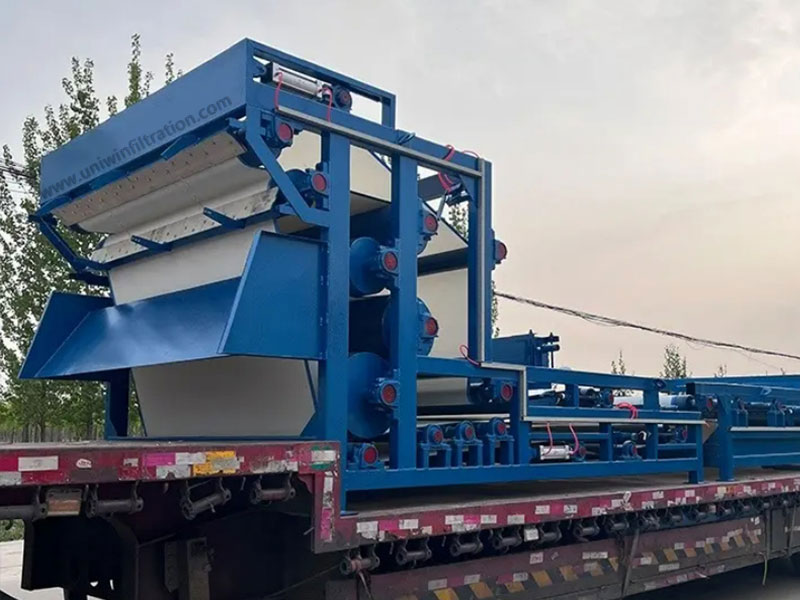
Equipment Structure
- Sludge feeding system: used to adjust the mixed sludge and filter aids.
- Gravity dehydration area: The unfolded filter belt provides gravity dehydration space.
- Wedge pressing area: Gradually apply pressure to the material.
- High-pressure pressing area: Deep dehydration is completed through multiple sets of rollers.
- Filter belt cleaning system: High-pressure water nozzles clean the filter belt to maintain filtration efficiency.
- Filter belt tensioning and deviation correction system: ensure the stability of the filter belt tension to avoid deviation.
- Drive system: controls the running speed of the whole machine.
Belt Filter Parameter
| Item | Model | ||||||||
|---|---|---|---|---|---|---|---|---|---|
| DY-500 | DY-700 | DY-1000 | DY-1500 | DY-2000 | DY-2500 | DY-3000 | DY-4000 | ||
| Main engine | Power(kw) | 2.2 | 2.2 | 2.2 | 2.2 | 2.2 | 3 | 4 | 4 |
| Air compressor | 3 | 3 | 3 | 3 | 3 | 3 | 3 | 3 | |
| Belt width (mm) | 500 | 700 | 1000 | 1500 | 2000 | 2500 | 3000 | 4000 | |
| Capacity (m3/h) | 3~4 | 4~6 | 5~7 | 8~10 | 12~15 | 15~18 | 18~25 | 25~30 | |
| Overall dimension | Length(mm) | 4920 | 4920 | 4920 | 4920 | 4920 | 4920 | 4920 | 4920 |
| Width(mm) | 978 | 1178 | 1478 | 1978 | 2478 | 2978 | 3478 | 4678 | |
| Height(mm) | 2350 | 2350 | 2350 | 2350 | 2350 | 2350 | 2350 | 23500 | |
| Feeding concentration | 0.2-8% | ||||||||
| Discharge concentration | 20-45% | ||||||||
Working Principle of Belt Filter
The operation process of the belt filter is usually divided into three stages:
Gravity dehydration zone
The sludge first enters the gravity dehydration zone and is evenly distributed on the filter belt. Some free water flows out naturally under the action of gravity. This stage mainly reduces the free water content of the sludge to prepare for subsequent pressing.
Wedge-shaped area (pre-pressing area)
After gravity dehydration, the sludge enters the wedge-shaped area, and the two filter belts gradually move closer to form an angle, exerting a certain pressure on the sludge, so that the capillary water is further pressed out.
Squeeze dehydration zone: The filter belt runs alternately between multiple rollers, exerting strong and continuous mechanical pressure on the sludge, further squeezing out the remaining water, and finally forming a dry mud cake with a low moisture content.
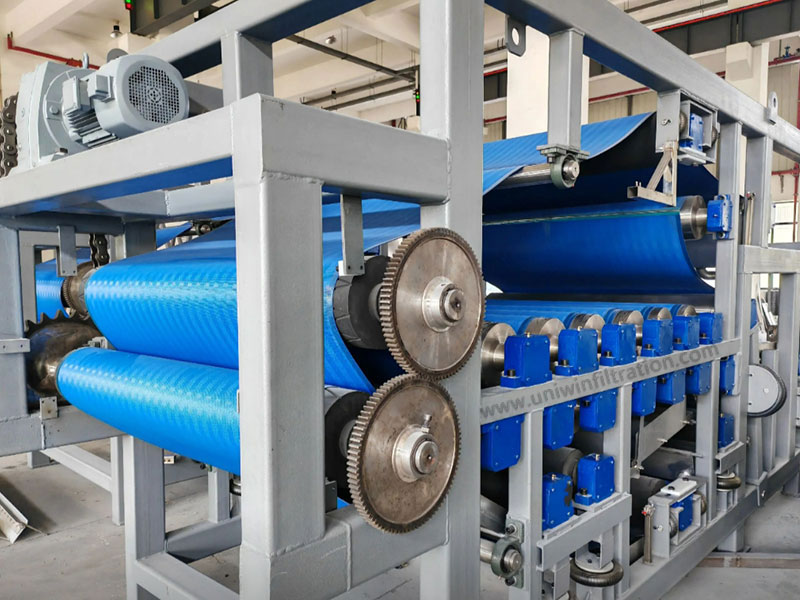
Core Advantages of Belt Filter
The belt filter adopts a continuous filtering and pressing method, without frequent start and stop, and is particularly suitable for medium and large sludge processing. With an automatic dosing and tension correction system, the whole machine can realize one-button operation and unattended operation.
Low energy consumption and low operating cost
The filter belt and roller are mainly driven by the motor, and the energy consumption is much lower than that of intermittent equipment such as plate and frame. In some working conditions, no additional heating or high-pressure auxiliary system is required, saving resources. When used with flocculants such as polyacrylamide (PAM), the drug consumption is low, and the dehydration efficiency is high.
Compact structure, simple maintenance
Small footprint, more compact structure than vacuum filter and centrifuge, especially suitable for sludge treatment stations with limited space. The filter belt is easy to replace, the mechanical structure is simple, the maintenance cycle is long, and the cost is low. The high-pressure nozzle flushes the filter belt online to effectively prevent blockage and ensure long-term stable operation.
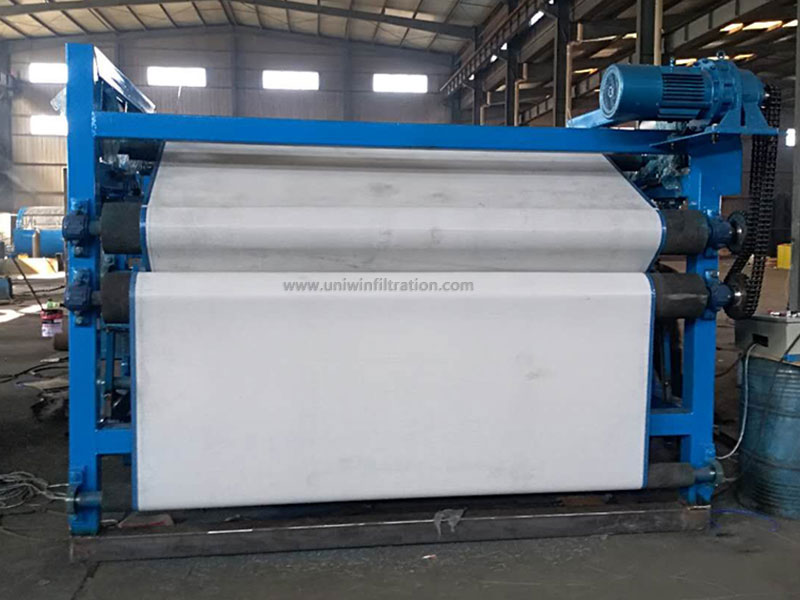
Strong adaptability and wide application
Applicable to various types of sludge, such as municipal sludge, papermaking sludge, printing and dyeing sludge, alcohol plant lees, food pomace, etc. By adjusting the filter belt speed, tension, roller pressure, and other parameters, it can cope with different sludge concentrations and dehydration requirements.
Excellent dehydration effect, low moisture content of filter cake
Multi-stage pressing design, wedge-shaped area + multiple sets of rollers, realizes staged pressing and dehydration, and the mud dryness is high. The dry mud cake is easy to transport, stack, or further resource treatment (such as incineration, composting, etc.). Reasonable flocculation conditioning and filter belt screening ensure that the effluent can be directly reused or discharged in compliance with standards.

